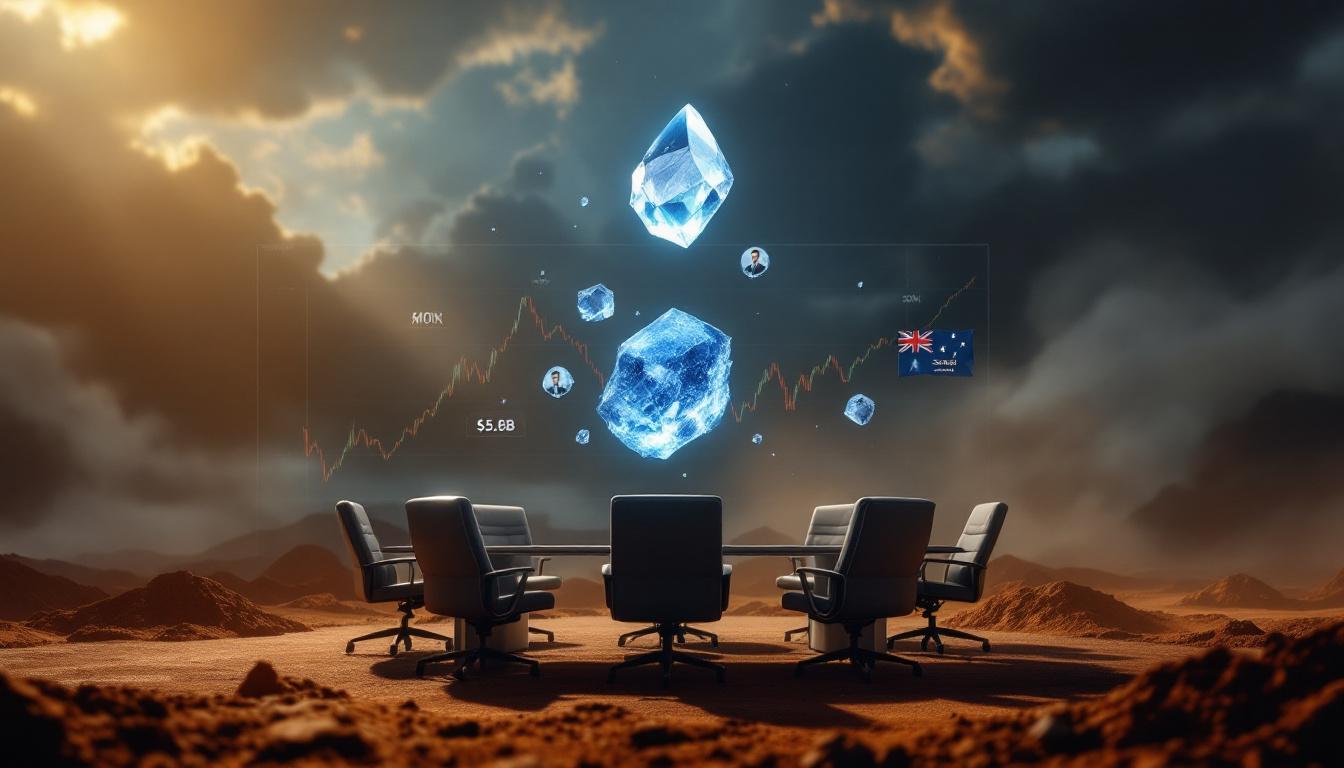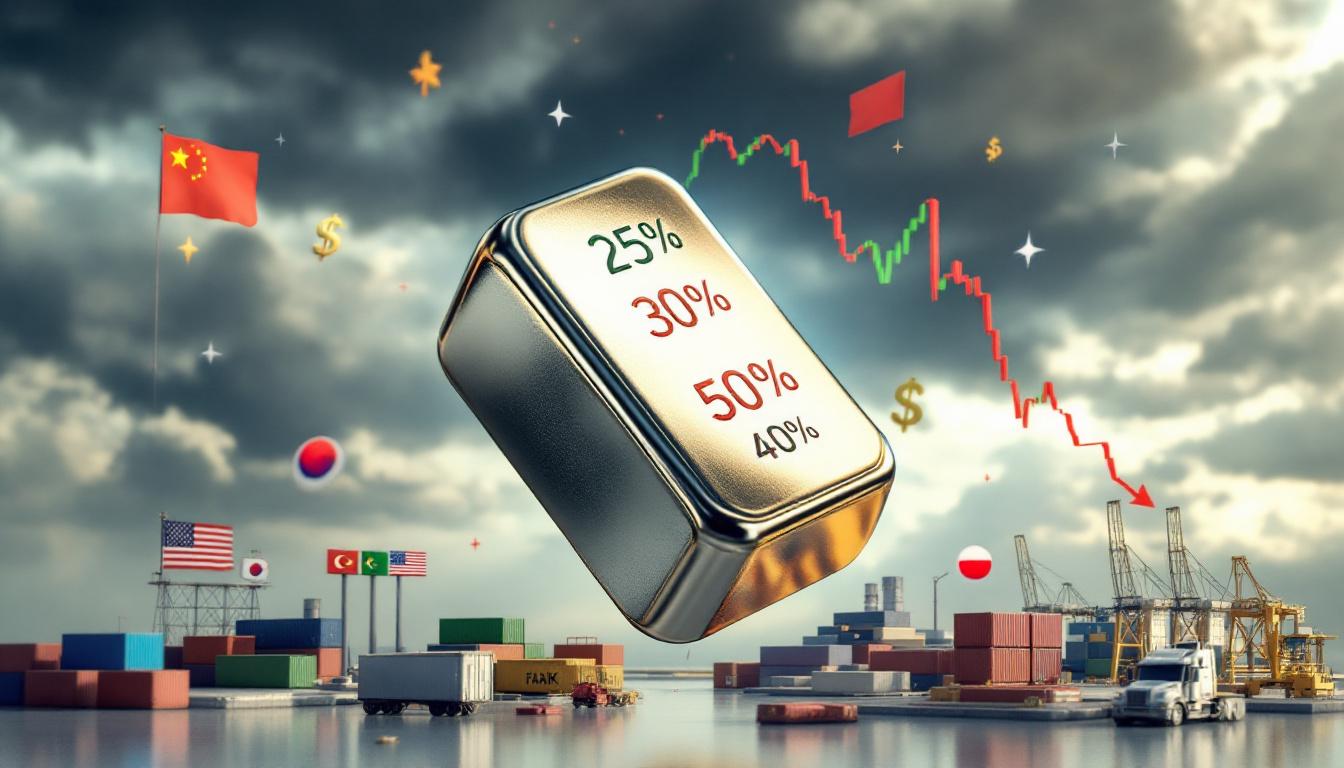Despite the market’s current focus on critical minerals for the energy transition, gold in an energy-obsessed world is experiencing a remarkable resurgence. Industry experts note that generalist investors are returning to the gold sector for the first time since 2021, a trend underscored in a comprehensive gold market analysis.
The renewed appeal also reflects a broader cultural fascination. Discussions of our enduring obsession with gold remind us that gold has always been more than just a commodity. The Denver Gold Forum recently showcased the most optimistic corporate outlook since before the pandemic disruptions of 2020.
"We’re witnessing a renewed confidence in gold as both a hedge against economic uncertainty and as a strategic component of diversified portfolios," explains David Awram, Senior Executive VP at Sandstorm Gold Royalties. Generalist and institutional investors alike are contributing to the shift.
The World Gold Council is modernising the sector through its Gold 247 initiative. This project plans to integrate blockchain technology into gold trading systems. The goal is to create a transparent, efficient, and accessible marketplace, with activity expected to pick up by Q4 2024.
Nearly 17% of global non-ferrous mineral exploration budgets in 2024 remain allocated to gold. This persistent relevance reinforces gold’s position even when many government incentives prioritise other critical minerals.
How Do Royalty Companies Create Value in the Gold Sector?
Royalty companies use a unique business model that leverages the strengths of the gold sector while reducing traditional risks. They acquire high-quality, low-cost assets with long mine lives—the backbone of a resilient portfolio.
Sandstorm Gold Royalties, for example, has 50% of its portfolio in mines within the lowest All-In Sustaining Cost (AISC) quartile. This strategic focus outperforms competitors such as Wheaton Precious Metals and Triple Flag Precious Metals. Such resilience is crucial in volatile markets.
Low-cost assets form the bedrock of their business strategy. Mines in the lowest cost quartile can continue exploration and development even when gold trades at $1,200 per ounce, as highlighted in gold price trends 2024. This ensures growth potential regardless of market fluctuations.
The royalty model delivers exceptional financial performance. With average EBITDA margins of around 85% compared to roughly 35% for traditional mining operations, these companies manage to sustain profitability and maintain dividends even in challenging times.
Diversification across multiple assets and jurisdictions further protects against inherent risks. Sandstorm operates across nine countries with less than 15% exposure to any single region. This approach efficiently mitigates potential geopolitical risks.
A quartile-based portfolio structure also reduces cash flow volatility. Royalty companies typically exhibit a beta of 0.4, much lower than the mining sector’s 1.2. This stability is particularly attractive to those seeking mining exposure without the volatility of direct production.
What Growth Strategies Are Gold Royalty Companies Pursuing?
Gold royalty companies balance near-term opportunities with long-term value creation. Many prioritise debt reduction while patiently awaiting growth assets to come online. For instance, the Greenstone Mine is ramping up to 75% of nameplate capacity by Q3 2024.
The Platreef project is expected to begin production in 2025 with a capital expenditure of approximately $400 million. Strategic patience is essential. Companies secure future cash flows years in advance, then monitor development progress until production begins.
Share buybacks have also emerged as a popular capital allocation strategy. Some firms have committed up to $250 million for repurchase programmes between 2024 and 2025. Such initiatives return value to shareholders and reinforce management’s long-term confidence. This trend mirrors overall outlook details in mining finance predictions.
Maintaining robust corporate development teams is another key aspect. These teams secure future growth by nurturing long-term relationships and monitoring the market. Years of collaboration often precede formal deals, giving firms exclusive access to valuable streaming opportunities.
Sandstorm’s gold stream option on Glencore’s MARA project, secured in 2015, is a prime example. The company locked in favourable terms at roughly 65% of current spot prices, positioning themselves for exceptional returns as the project advances. Their strategy even draws comparisons to a wheaton streaming approach.
The structured deal pipeline progresses methodically from option exercise to cash flow realisation. Advanced projects generally deliver returns within 12–24 months, while exploration-stage assets might need 5–7 years to reach production.
How Does Gold Financing Support Critical Minerals Development?
Gold plays a crucial yet often overlooked role in financing critical mineral developments essential for the energy transition. For example, 62% of new copper projects incorporate gold byproduct credits, evidencing natural synergies between precious and critical minerals.
Innovative funding through precious metal stream financing benefits both royalty companies and critical mineral operators. By selling future gold production at a predetermined price, copper developers secure upfront capital without diluting shareholders or increasing debt loads.
According to Awram, "Gold streams effectively subsidise critical mineral development." Typically, byproduct gold covers 15–25% of a project’s capital expenditure, making marginally economic deposits commercially viable.
Strategic partnerships further enhance these arrangements. Sandstorm’s collaboration with Horizon Copper allowed them to secure $150 million in funding for critical mineral projects through gold streaming. Such innovative strategies reduce the weighted cost of capital significantly compared to traditional debt.
Furthermore, gold mines generally require lower infrastructure investments. Processing costs for gold-only operations average around $25 per tonne, compared to more than $40 per tonne for critical minerals. This difference helps gold projects reach positive cash flow with smaller resource bases and lower capital intensity.
The Antamina stream is a notable example. Sandstorm provided $75 million in upfront financing to expand copper–zinc production in one of Peru’s largest mining operations. This arrangement boosts production while assisting both parties in supporting critical mineral supply.
What Role Do ESG Considerations Play in Gold Investment?
ESG factors have moved from being peripheral to central investment criteria in the gold sector. Companies with robust ESG practices secure better financing and partnership terms. Institutional investors increasingly require comprehensive ESG compliance for mining investments.
David Awram states, "We view ourselves as the ultimate long-term investor in the mining space and are always thinking critically about how a potential investment functions within its community." His comments highlight the rigorous due diligence processes that evaluate up to 143 ESG indicators before any partnership is finalised.
The financial benefits of strong ESG practices are well documented. ESG-aligned companies can often secure debt financing at around 5.2%, versus 7.8% for non-compliant peers. This reduction in cost reflects favourably in equity valuations with premium multiples for ESG leaders.
Royalty companies inherently adopt a long-term view. Their investment horizons span decades rather than quarters. This encourages a more holistic approach to operational impacts on local communities, environments, and governance systems—an imperative during multiple commodity cycles.
Standardised frameworks such as those provided by the International Resource Management Association (IRMA) help companies benchmark their practices. However, only about 12% of gold mines currently achieve Tier 1 certification. This gap offers both challenges and opportunities for firms seeking to stand out.
How Is Gold Adapting to the Digital Economy?
Gold is undergoing a technological renaissance that is transforming how this ancient asset functions in modern markets. The World Gold Council’s Gold 247 initiative leads this evolution, incorporating blockchain technology to modernise trading and management systems.
The platform aims to tap into the rapidly expanding tokenised gold market, projected to reach $50 billion by 2027. This digital transition resolves traditional barriers to gold ownership, such as storage and divisibility, thereby broadening the investor base.
A World Gold Council representative explains, "Blockchain integration has reduced settlement times from the traditional T+2 cycle to just 15 minutes in pilot programs." These efficiency gains alone could unlock billions in capital.
The new digital architecture utilises Hyperledger’s permissioned blockchain alongside Ethereum’s public ledger. This hybrid system balances security with accessibility. Smart contracts automatically execute royalty payments when gold moves between vaults, eliminating labour-intensive reconciliations.
Early indicators of success are promising. Digital gold trading volumes have jumped from about $3 billion in 2020 to an estimated $27 billion in 2024—a clear sign of market acceptance for these technological innovations. Embracing digital change remains crucial in a world where technology continually reshapes investment strategies.
What Makes Gold Exploration Persistently Dominant in Mining?
Despite the urgent global need for critical minerals to support the energy transition, gold exploration continues to command a major share of non-ferrous exploration budgets. In 2023, 68% of greenfield exploration funding was allocated to gold prospects, demonstrating its enduring economic allure.
Many gold mines benefit from lower infrastructure requirements compared to critical mineral projects. Modular carbon-in-pulp (CIP) processing plants enable even sub-100,000-ounce producers to achieve payback periods in under two years.
Geological co-location also contributes. In regions like the Andean belt, gold and copper deposits are often discovered together, allowing companies to develop integrated production plans. By-product gold production, in turn, serves as a powerful financing tool.
Historical dynamics also play a part. Early gold rush era experiences shaped modern mining practices, influencing both operational models and investor sentiment. For instance, insights into the gold rush impact provide context for today’s exploration strategies.
Furthermore, gold exploration projects often secure permits around 18 months faster than battery metal developments. This speed leads to lower holding costs and earlier cash flow realisation, thereby enhancing overall project economics.
FAQ: Gold Investment in the Energy Transition Era
Why invest in gold when critical minerals are needed for the energy transition?
Gold in an energy-obsessed world retains its role as a traditional reserve and investment asset. It also helps finance critical mineral projects through by-product streams, offering essential counter‐cyclical benefits and portfolio diversification.
How do royalty companies differ from traditional mining investments?
Royalty companies provide exposure to mining upside with less operational risk. Their focus on low-cost assets, predictable cash flows, and high EBITDA margins differentiates them from traditional operators while preserving the benefits of gold price movements.
What technological innovations are changing gold investment?
Blockchain integration—driving initiatives like Gold 247—modernises trading infrastructure. These innovations cut settlement times, enable fractional ownership, and foster transparent global markets, thereby ensuring gold remains competitive in modern digital portfolios.
Gold in an energy-obsessed world continues to earn recognition as a strategic asset. Its modernisation, driven by technological improvements and resilient investment models, secures its relevance for a diverse set of investors in a rapidly evolving market landscape.
Want to Stay Ahead of the Next Major Gold Discovery?
Don't miss potential investment opportunities in the gold sector – get real-time alerts on significant ASX gold discoveries through Discovery Alert's proprietary Discovery IQ model, giving you the market edge to capitalize on announcements before they hit mainstream news. Explore how historic gold discoveries have generated substantial returns by visiting the Discovery Alert discoveries page.




